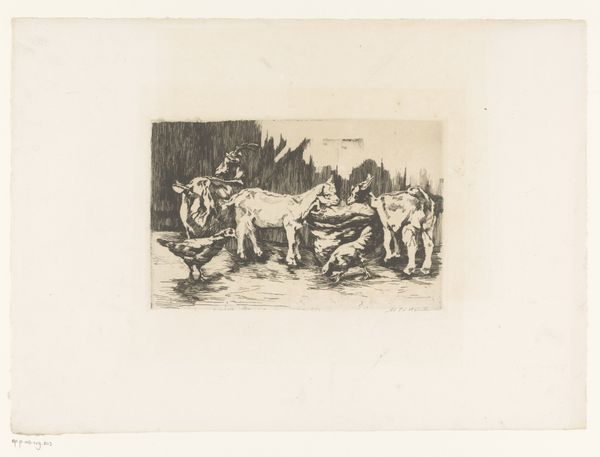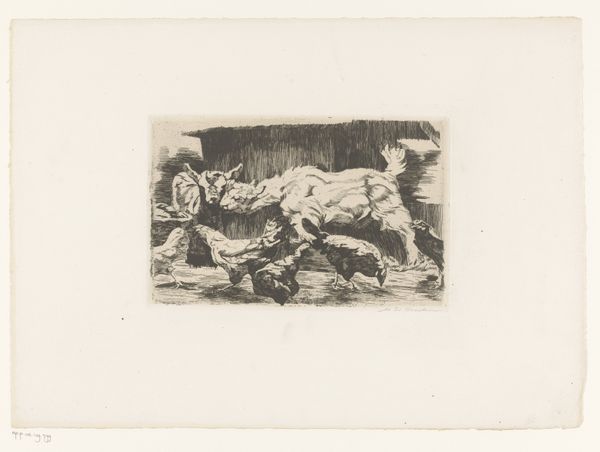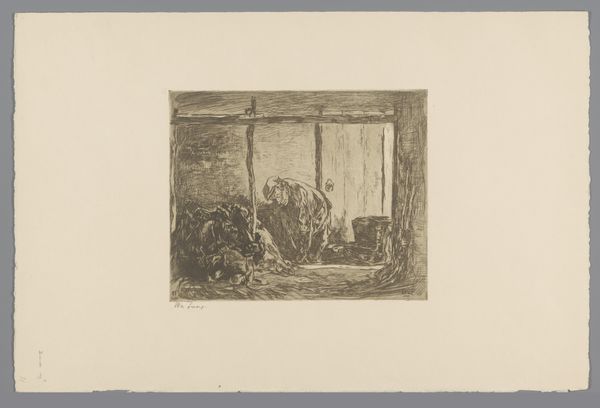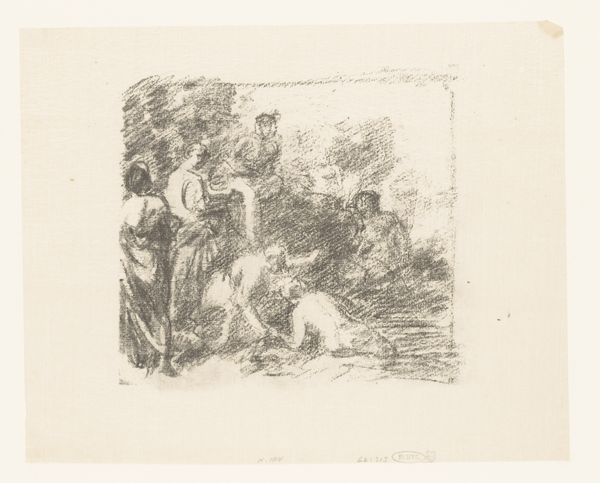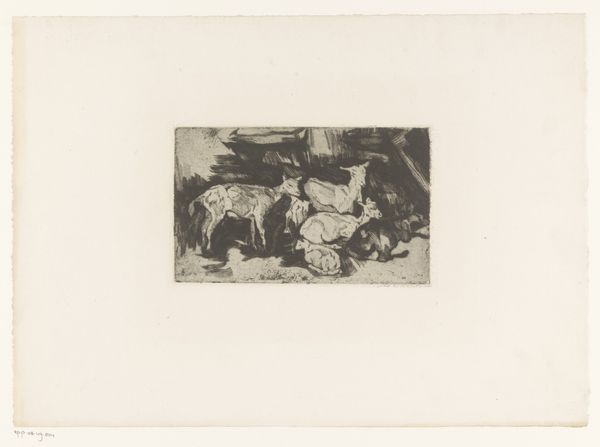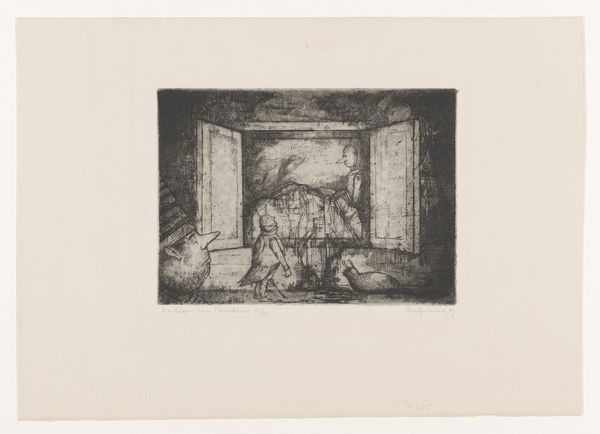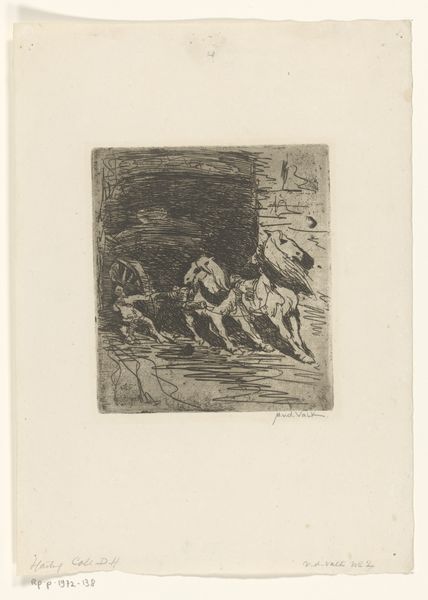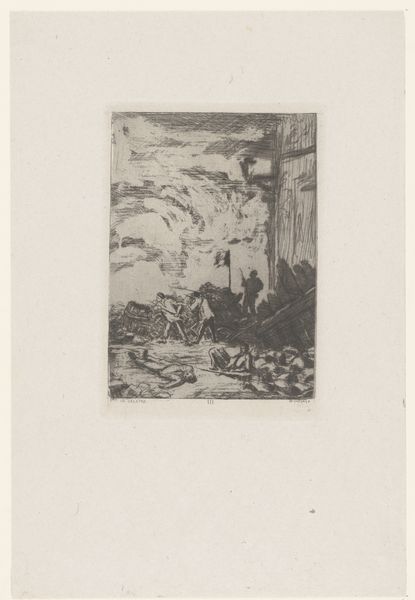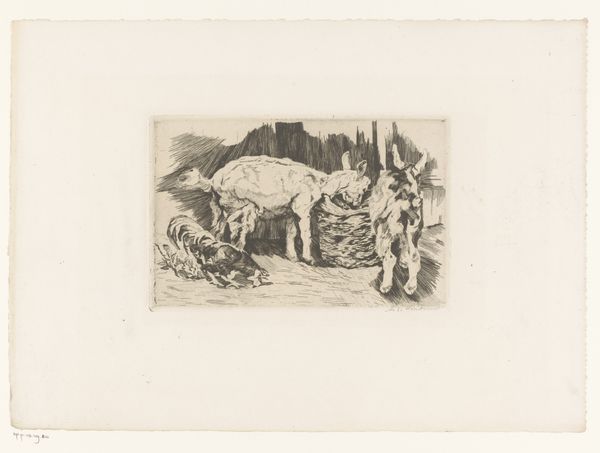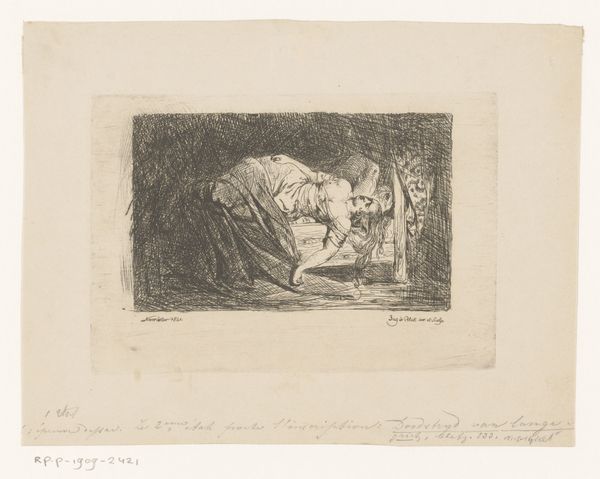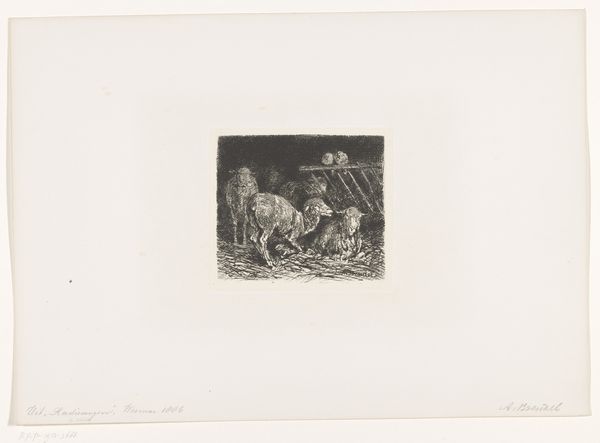
drawing, print, etching, paper, ink
#
drawing
#
ink paper printed
# print
#
etching
#
old engraving style
#
landscape
#
figuration
#
paper
#
ink
#
sketchbook art
Dimensions: height 108 mm, width 178 mm
Copyright: Rijks Museum: Open Domain
Curator: Welcome. Before us is "Three Goats in a Barn," a drawing and etching by Adolf Eduard Herstein. The work is undated but presumed to have been made between 1879 and 1932. Editor: Stark, wouldn't you say? The composition is remarkably simple, almost crude. It conveys a certain rural atmosphere, perhaps even a touch of melancholy, through its emphasis on light and shadow. Curator: Precisely. Note how Herstein uses the etching technique to define forms, focusing less on pure representation and more on evoking mood. The contrasts are quite striking. How do you view the artist's choices of animal figure for its allegorical implications? Editor: I would posit that it is related to shifts in artistic representation influenced by rapid urbanization and industrial advancement in Europe. Farm animals, particularly goats in their rudimentary confinement, often functioned as both a literal subject but also represented a more sentimental longing for simpler pastoral life. Do you agree with this perspective? Curator: Yes, indeed, one may explore beyond the stylistic choices of contrasting areas in his printed sketches of landscapes in which a turn-of-the-century society was entrenched, also remarking on the relationship of country and city life through their own cultural memory. He invites one to observe how the narrative context transforms familiar elements. The placement of these creatures within a barn allows this seemingly modest drawing and print piece, composed in black ink on paper, to function as more than the representation of an animal herd or bucolic, tranquil image, inviting the audience to a discussion about its meaning. Editor: This piece speaks to how we construct idealized memories from an industrializing present—where "nature" becomes a manufactured concept for social reflection as a sort of constructed refuge from reality. Very interesting. Curator: Indeed, reflecting on the relationship with progress and nature within art opens important societal perspectives that would otherwise be omitted if restricted purely to its artistic qualities. Editor: An engaging commentary then, beyond surface presentation, on our constructed ideas of nature—thank you.
Comments
No comments
Be the first to comment and join the conversation on the ultimate creative platform.
